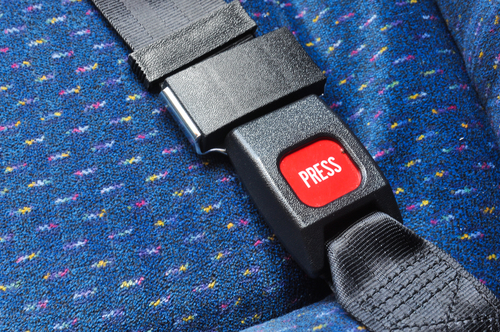
07 May Motor Coach Seat Belts
On November 20, 2013, the National Highway Traffic Safety Administration (NHTSA) directed that, as of November 2016, all new coaches would be obligated to have three-point seatbelts installed on their rigs. Even though this hasn’t traditionally been required, some companies have installed them as an added benefit for their passengers. The new law makes it so that seatbelts will now be standard, though this does not apply for buses that are used for transit or school transportation.
Historically, buses are known to be a safe mode of transportation, simply because of how big they are and how much they weigh, along with the compartmentalization factor that buses are known for. Two reasons might be cited as an explanation for this new mandate:
Although fatalities occurring as a result of bus crashes are rare, they do happen. Mandating that seatbelts are installed would prevent this from happening in a rollover, although it is still up to the individual riders to choose to use them.
Also, in case of a crash, a lot of litigation is likely to take place. If passengers had the option to apply a seatbelt and decided on not to, this can aid bus companies in the event of a lawsuit against them, citing that passengers could have used that safety feature for their benefit.
Compartmentalization, on the other hand, is already a component of the standard experience when you ride a bus. Although one could dispute that coaches aren’t completely compartmentalization compatible (like school buses are, for example), it’s still relatively snug, and sitting close with your neighbors isn’t just so you can settle a large group (though it certainly is that). It relates to keeping everyone safe by getting rid of extra wiggle room in case of a crash. This has historically served the bus industry well and has been proven to remove most of the huge risks involved with collisions.
When this regulation goes into effect, it will only be mandated for new buses. Again, one might wonder why this is the case. Why will new operators be required to meet this stipulation, while older fleets will still be able to do business with older vehicles?
Cost. Bottom line. It is difficult to add seatbelts to previous seats installed without them. This makes it necessary for a company to install brand new seats on their buses, a process that means exorbitant costs. Additionally, you aren’t able to fit as many seats on a bus that comes equipped with seat belts, so it potentially alters the layout of the bus and the capacity capability. Because of the cost factors, and the fact that buses get old and eventually are retired (like everything else), it may not be economically sound to require a company to bring their older buses up to seatbelt standards, expending a lot of money when they might not be around a lot longer anyway.
Considering the nature of seatbelts, more structural support is needed. So, if you’re aiming to put seatbelts on an older bus, not only will you have to order new seats, but you may have to make some structural changes to the bus to support the added strain that seatbelts include the event of a crash.
With the above examples, one can clearly find that, for the amount of change and restructuring (and gutting!) to a bus that’s required, it isn’t worth it to require seatbelts on older buses, especially when one takes into consideration that the bus fatality rate is extremely low to begin with.
On the whole, the idea behind this new mandate is to further passenger safety, especially in the event of a collision that leads to a rollover. As we witness new buses coming with seatbelts as the standard, we intend to see a lower bus crash fatality rate associated with it at the same time.


